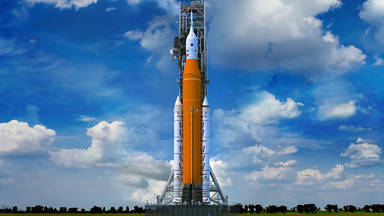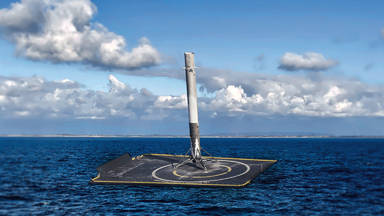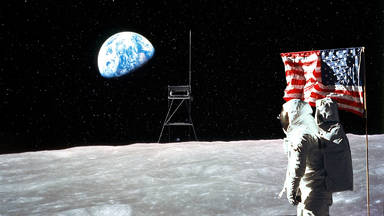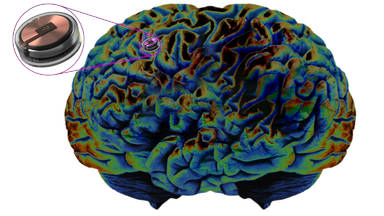
A force is an action that changes the movement of an object. Objects usually tends to conserve their motion, in particular, the direction and speed. However, sometimes it happens to change direction or speed. When something makes an object change its movement, we say that it experiences a force.
At first glance, we can classify all forces in the universe into three categories.
First, We can think of the force that pulls us back when a car accelerates, or the centrifugal force that pushes us to one side when it turns. These kinds of forces are called inertial forces. They most often appear inside a vehicle when it changes speed or direction.
Secondly, we can think of forces that act at a distance. The two main ones being Gravity, which attract massive objects together, and Electromagnetism, which attracts or repels charges and magnets.
Finally, the third category groups all contact forces. These are the forces of pressure, traction torsion, deformation, or even friction. All these forces have the property of acting locally through a physical contact between two objects.
First, let's start with inertial forces. As an example, we can imagine a passenger inside a car. When the car starts to move, an inertial force appears, pushing the passenger back into his seat. From his point of view, when the car accelerates, a force appears and pulls all objects to the rear. At first glance for the passenger, this force exists. It has to be accounted for in order to understand why objects are drawn backwards.
But if he looks out the window, the passenger realizes he's not the only one to experience this force. When the car starts, all objects in the universe seem to move backwards all together as this same force applies everywhere.
When we think about it this situation is absurd. How could the car influence our whole universe instantly? We would never expect a star at the other end of the cosmos to be influenced by the movement of a car and even less so instantaneously.
To resolve this paradox, we actually just need to change the point of view. Instead of saying that all objects are drawn backwards except the car, we rather observe from the outside and say that it's the car which undergoes a forward force, while the rest of the universe stays still.
The passenger thinks there is a force because he is observing from inside the car, which is itself subject to a force: The friction of the wheels against the ground.
This way of thinking is very general and applies to all inertial forces. All these forces seem ubiquitous. They seem to act everywhere, instantaneously. From this we deduce that they cannot be real forces. They are only illusions fictitious forces which appear because we locate ourselves in a frame which itself is subject to a force.
First, let's consider Gravity. When we drop an apple, the apple is accelerated towards the ground and we say that it undergoes a downward force, the pull of the earth. As long as the apple has not touched the ground, it seems constantly attracted by the earth at a distance. But the apple is not the only thing affected. All objects in the universe also seem to be attracted by the earth. As if the planet were inflicting the same force universally to all bodies that exist. Like the previous example, we can ask ourselves how reasonable it is to think that the earth could influence the entire universe.
After all, as with the car, it would be simpler to say that the universe is not influenced by the earth. That it is not the objects that all fall downwards, but simply the ground that rises upwards. Like the inertial force in the car, the force of gravity would only be an illusion. It would appear when we observe from the ground, whereas it is precisely the ground which accelerates.
At first, this vision seems more elegant. Instead of inventing a mysterious force, Gravity, it suffices to say that it is the ground that rises. Objects seem to come closer to the ground not because they fall, but because the surface accelerates upwards.
Having said that, it is easy to see that this explanation alone is flawed. Indeed, if it were the ground which accelerated, why wouldn't the planet grow bigger over time? If the ground moves outwards, we should observe that the earth expands, and it would eventually blow up. Yet earth has not changed size for billions of years, and objects continue to fall at its surface.
The answer to this problem is very subtle and constitutes one of the most shocking discoveries in modern physics. The ground does rise. Its surface is constantly accelerating outwards, because it is pushed by the pressure of the materials that make the earth. If the planet does not grow, it is because the space all around it, the fabric in which it is contained shrinks in the opposite direction.
This phenomenon is called space-time curvature. The earth does not directly influence objects in the universe. The planet is only growing outwards because of its pressure, but as it is very massive, the earth also compresses the fabric of the universe in the opposite direction. The planet grows into a space that contracts and the two effects balance each other. This way of understanding the universe is called General Relativity. We introduce the fact that space-time gets curved to get rid of Gravity. Much like the inertial force inside the car, gravity is an illusion. We observe that the apple falls downwards, while it is in reality the surface which is subject to a force. The pressure of the planet that prevents it from collapsing in on itself.
We now understand that gravity is merely another inertial force and we are left with two categories only. Actions at a distance, including electromagnetic forces, and contact forces.
But if we think about it, contact forces are only approximations. In reality, the matter that makes up objects is made up of atoms. When we observe a contact force at our scale, it is really an interaction between the atoms of each of the two objects.
When we push an object, for example, the contact force does not really exist. It is only the sum (at our scale) of all the electromagnetic forces in play that repel electrons and therefore atoms between our hand and the object. Ultimately, contact forces are nothing more than the manifestation at our scale of the electromagnetic force.
Therefore apart from inertial forces which are illusions, the only real forces in the universe seem to be the fundamental interactions that occur at the scale of particles. In our universe, we identify three of these. The electromagnetic interaction, which explains why electrons repel each other and which explains all contact forces. The strong interaction, which explains the cohesion of protons and neutrons within atoms, and finally, The weak interaction, from which radioactivity arises. These three fundamental interactions, alone, describe the forces that act upon all particles.
To conclude, it would be wrong to say that forces do not exist. Ultimately, inside a moving car objects are well described by an inertial force, but this force is just a tool. A mathematical description that works in the car's frame of reference. Inertial forces like the Centrifugal force, the Coriolis force, and even the force of Gravity are in the end all mere illusions that disappear when we take an appropriate point of view.









